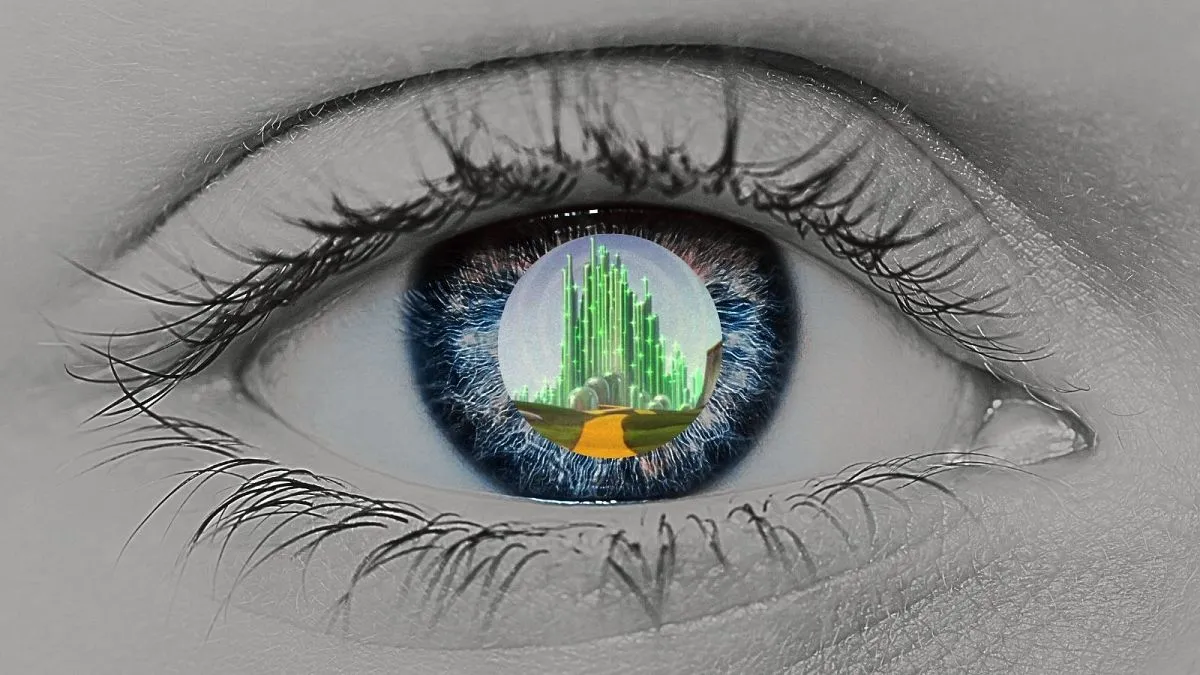
In a groundbreaking study, scientists have revealed the existence of a new color, intriguingly named ‘olo’. However, this unique shade has only been witnessed by five individuals worldwide and cannot be perceived with the naked eye. According to researchers from UC Berkeley and the University of Washington, this saturated shade of blue-green can only be seen through specialized laser stimulation.
The pioneering research team employed a technique known as the Oz Vision System, which pays homage to the Emerald City from L. Frank Baum’s beloved novel, “The Wonderful Wizard of Oz,” and its iconic 1939 film adaptation starring Judy Garland. This innovative system utilizes laser pulses that are directed into the subjects’ eyes, allowing them to perceive colors outside the traditional spectrum of human vision.
The findings of this fascinating study were published in the journal Science Advances. Researchers discovered that by intentionally “jittering” the Oz laser signals by just a few microns (one millionth of a meter), participants were able to perceive the laser's natural color. The human eye contains three types of cone cells: S (short), L (long), and M (medium), each of which is sensitive to different wavelengths of light. By stimulating only the M cones, the five participants reported experiencing the vibrant color known as olo, which is represented by the binary code 010.
The research paper states, “We name this new color ‘olo’. Subjects report that olo in our prototype system appears blue-green of unprecedented saturation when viewed against a neutral grey background.” Participants noted that to achieve a color match with the closest monochromatic light, they had to desaturate olo by adding white light, providing unequivocal proof that olo exists beyond the conventional color gamut.
Professor Ren Ng, a co-author of the study from the University of California, expressed his astonishment at the findings. He remarked, “We predicted from the beginning that it would look like an unprecedented color signal, but we didn’t know how the brain would interpret it. The result was jaw-dropping – it’s incredibly saturated.” In an interview on BBC’s Radio 4’s Today program, Professor Ng compared olo to experiencing an intensely vivid version of a color one has known all their life. He stated, “Imagine seeing only pastel pinks and then encountering the most vibrant baby pink, which you suddenly learn is called red.”
While the researchers provided an image of a turquoise square to illustrate the hue of olo, they emphasized that this color can only be experienced through the manipulation of the retina with lasers. The claim of discovering a new color, however, has faced skepticism. Vision scientist John Barbur from City St George’s, University of London, argued, “It is not a new color; it’s a more saturated green that can only be produced in subjects with a normal red-green chromatic mechanism when the only input comes from M cones.” Barbur acknowledged the work as a “technological feat” but deemed its practical value as “limited.”
Despite the criticism, the study's authors remain optimistic about the implications of their findings. They believe that the Oz Vision System could provide deeper insights into how the brain constructs visual perceptions and may offer avenues for researching color blindness and other vision-affecting diseases. As the saying goes, “There’s no place like home,” and in this case, there’s no color like olo—something that would surely make Dorothy proud.